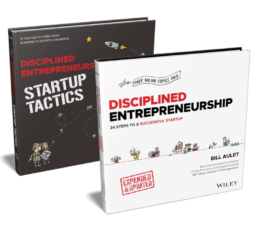Republished from the Wall Street Journal.
Valuing a company is always a mix of science and art, especially for startups. Historically the science has been pretty simple: Find comparable companies and do a multiple of earnings or revenue.
However, three drivers of startup valuation have emerged that are changing the game. “Acquihire,” is the act of buying out a company for the skills and expertise of its staff. It has become so well-known that it is even listed in the Oxford English Dictionary. When Facebook buys a company like Hot Potato, it’s not for the revenue stream or products — it’s for the employees.
Companies like Facebook and Google have led the way in making acquihire-based valuation more predictable and scientific. But two new groups of acquisitions are more interesting. I categorize them as “efficient customer acquisition” and “buying an option.” They have left traditionalists and “acquihirists” scratching their heads, trying to figure out where these valuations are coming from. But the more we look at these categories, the more they start to make sense.
“Efficient customer acquisition” comes from the new unit economics that entrepreneurs have to understand to be successful: the cost of customer acquisition (COCA) and the lifetime value of an acquired customer (LTV). Acquiring customers is expensive — if you can use completely automated techniques as LinkedIn does, it can cost $10 a customer or less; if you need to deploy high-priced salespeople, it can cost thousands of dollars.
A high COCA is not necessarily bad, nor is a low one necessarily good because your LTV — the profits you expect to make from each new customer has to be taken into account. A customer could be worth $10, $10,000, or $10 million depending on your business.
The LTV-to-COCA ratio is the key metric, as I explain in my book, “Disciplined Entrepreneurship”. For your business to have good fundamentals, your LTV should be at least three times higher than your COCA — from David Skok’s analysis. When a company like WhatsApp is bought by Facebook for $19 billion despite only having 55 employees and forward-looking revenue of at best $450 million, the LTV-to-COCA ratio is key. WhatsApp had 450 million customers, growing at the rate of 1 million per day. Facebook bought WhatsApp’s customers at $42 each, with an anticipated LTV of over $120.
The “buying an option” is much more difficult to quantify. Dominant companies like IBM didn’t feel threatened by startups and wouldn’t have considered buying an upstart like Microsoft. In hindsight, and with the work of academics like Clayton Christensen, executives know better and seek out to embrace disruptive innovations. Microsoft, Apple, Google, and Facebook were the disruptors not too long ago, so it is fresh in their minds.
Acquirers are buying options on an uncertain future with acquisitions like Instagram photosharing, Oculus virtual reality, Boston Dynamics mobile robotics, Titan Aerospace drones, and NestLabs behavioral economics. These companies may or may not pan out. They can win big like Google did with Android and Facebook did with Instagram. But more likely, they will be not very impressive, like Dodgeball or DailyDeal where the acquirers likely overpaid.
How does one value an option like this? That is a hard problem that won three academics (two from MIT) a Nobel Prize for it in 1997 and forever changed economic valuations. People came to realize that an option on something that could be very valuable, even if it had a high chance of being worth nothing, was still very valuable.
With all that in mind, I always end my classes on valuation by saying, “Now that we have done the math, how is the price set? It is very simple: Price is set when willing buyer meets willing seller.” There are a lot of willing, loaded and smart buyers today, so this new math of startups explains why the big companies have not lost their minds and are, in fact, acting very rationally.
The author
Bill Aulet
A longtime successful entrepreneur, Bill is the Managing Director of the Martin Trust Center for MIT Entrepreneurship and Professor of the Practice at the MIT Sloan School of Management. He is changing the way entrepreneurship is understood, taught, and practiced around the world.

The Disciplined Entrepreneurship Toolbox
Stay ahead by using the 24 steps together with your team, mentors, and investors.
The books
This methodology with 24 steps and 15 tactics was created at MIT to help you translate your technology or idea into innovative new products. The books were designed for first-time and repeat entrepreneurs so that they can build great ventures.

How relevant was this article to you?
Click on a star to rate it!
Average rating 4 / 5. Vote count: 1
No votes so far! Be the first to rate this post.
We are sorry that this article was not useful for you!
Let us improve this post!
Tell us how we can improve this post?
